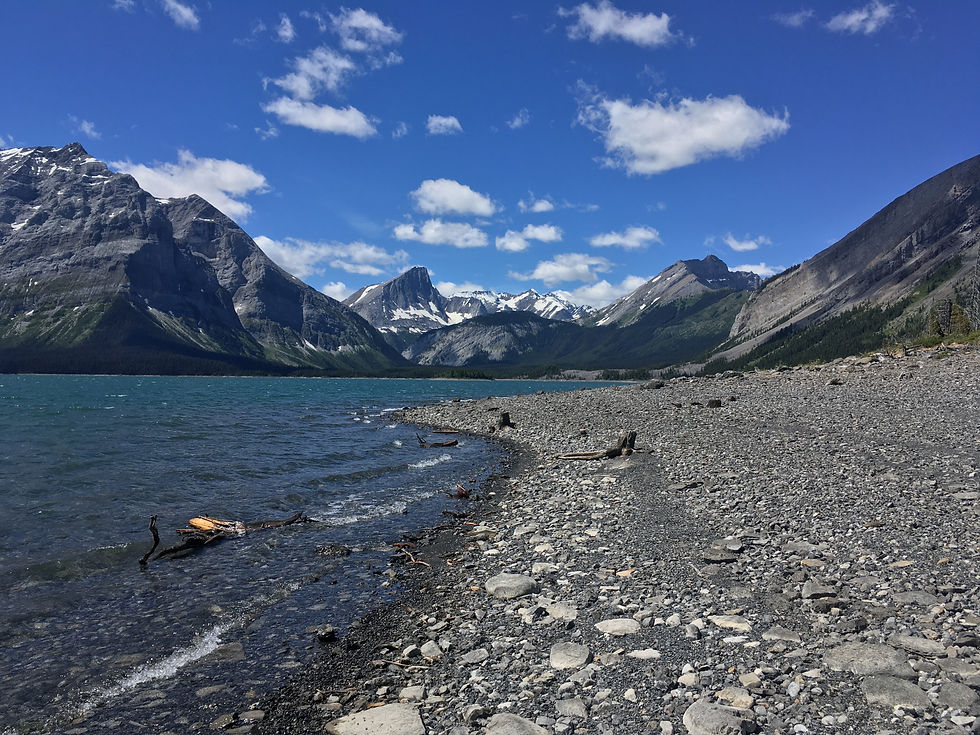‘Urban’ or ‘Urbanized’? Implications for Nature Conservation
- guy1896
- Dec 19, 2022
- 3 min read
A simple shift in terminology could provide conservation clarity in densely-developed areas

‘Urban’ is one of those “everyone nods” concepts. For the most part, we use the term pretty freely, generally assuming we all mean the same thing. Then someone asks a deeper question, and we freeze mid-nod.
This happened to me recently when the Corvus Centre was undertaking some research on ‘urban environmental sustainability’ across Canada.
Here’s where some of the common ‘urban’ assumptions fell flat: some of Canada’s largest cities have thousands of acres of land in extensive farming or extensive forest; and some rural counties have, or are planning, high-density 10,000+ person hamlets deep within their jurisdiction.
Okay, so I ‘discovered’ the term urban is vague – not exactly earth-shattering.
However, two problematic assumptions associated with the vague use of the term ‘urban’ were identified in our research, one with implications for the present, the other with implications for the future.
1. We conflate urban governance with urban land use and character
Which is the urban municipality, which is the rural?

First, we generally think of local governments (cities, towns, villages, counties, etc.) as being coarsely divided into ‘rural’ and ‘urban.’ Cities are clearly urban, counties are clearly rural, and everything else is on the spectrum in between.
Conservation strategies for ‘urban’ areas have some distinctive considerations/challenges: high levels of human activity, tightly-intermixed properties, multiple ownerships in a short distance, high levels of infrastructure (especially roads), etc. These dictate the potential threats to local ecological function, and the strategies that might be effective in mitigating them.
However, the terms city, town, county (and many others) reference a governance structure – different types of public corporations established to provide community services – not necessarily the actual land use or character (as the examples above show).
Should the nature conservation aspects of urban environmental sustainability programs be concerned only with cities and towns? If that were the case (and it often is), then conservation on the farm and forest lands within cities may be poorly matched with the ‘urban’ conservation tools and strategies being deployed.
Likewise, a rural county that is urbanizing an area of its jurisdiction would miss the attention of organizations and programs aimed at promoting conservation within urbanized areas.
(NB: Contributing to this dilemma is the philosophical turf war between cities and counties, debating whether counties should ever be involved in any sort of urbanized development)
Divorcing the concept of “urbanization” as a land use from the concept of “urban” as a descriptor of local governments might allow us to transcend these issues.
2. We presume a certain type of interface between urban and other land
The second shaky assumption is that there is an ‘urban-rural dividing line’, or at least a transition gradient. That’s perhaps a fair assumption where the area around a city is ‘undeveloped’ (or to use other development-assumed terms: hinterland, urban fringe, unimproved). This usually refers to extensive farmland or forest. The surrounding land is viewed as a land bank for future development, with an expectation that market forces will eventually drive its conversion from ‘rural’ to ‘urban,’ subject to a relatively-consistent leading edge.
Spina and Tramontana (2021) describe a different kind of interface in more densely-developed areas (their study looked at Japan and Italy) where “city-country fingers” are interspersed. In these cases, fingers of ‘country’ stretch into the urban landscape of a city, while fingers of ‘city’ stretch into the surrounding countryside.
From an ecological, land use, and governance perspective, this implies a much different scenario. An ‘edge’ becomes multiple times longer, folding back on itself, leading to a much more complex inter-mixing of cultural and ecological systems. In this instance, the ‘rural’ area is not necessarily facing a certain conversion to an all-encompassing ‘urban’ land use.
Looking into the always-cloudy crystal ball suggests that this ‘peri-urban’ realm will only become increasingly important for nature conservation, and that that importance will be based on what this space tells us, not about an unquestionable ‘transition’ from urban to rural, but about an intermingling of “urbanized” landscapes with other land uses.
Shifting from Urban to Urbanized
An unexpected side-effect of Corvus’ urban environmental sustainability research was to shift both my language and my thinking from “urban” to “urbanized.”
Beyond adding four letters to a word I use regularly, what does this imply?
I believe this would keep us from getting stuck on the governance structure – and its assumed land-use patterns – and help us to focus on the actual character of the land. In doing so, we can more accurately assess the existing/potential ecological functions of these densely-developed landscapes, and more appropriately deploy conservation tools and strategies – regardless of whether those lands are in a city, village, hamlet, county, etc.
This small shift might better prepare us for the more nuanced conversation that will be required regarding nature conservation in urban(ized) areas.
Spina, Roberto and Emiliano Tramontana. 2021. “An automated classification system for urban areas matching the ‘city country fingers’ pattern: the cases of Kamakura (Japan) and Acireale (Italy) cities.” Journal of Urban Ecology, 2021, 7(1), 1–11.



Comments